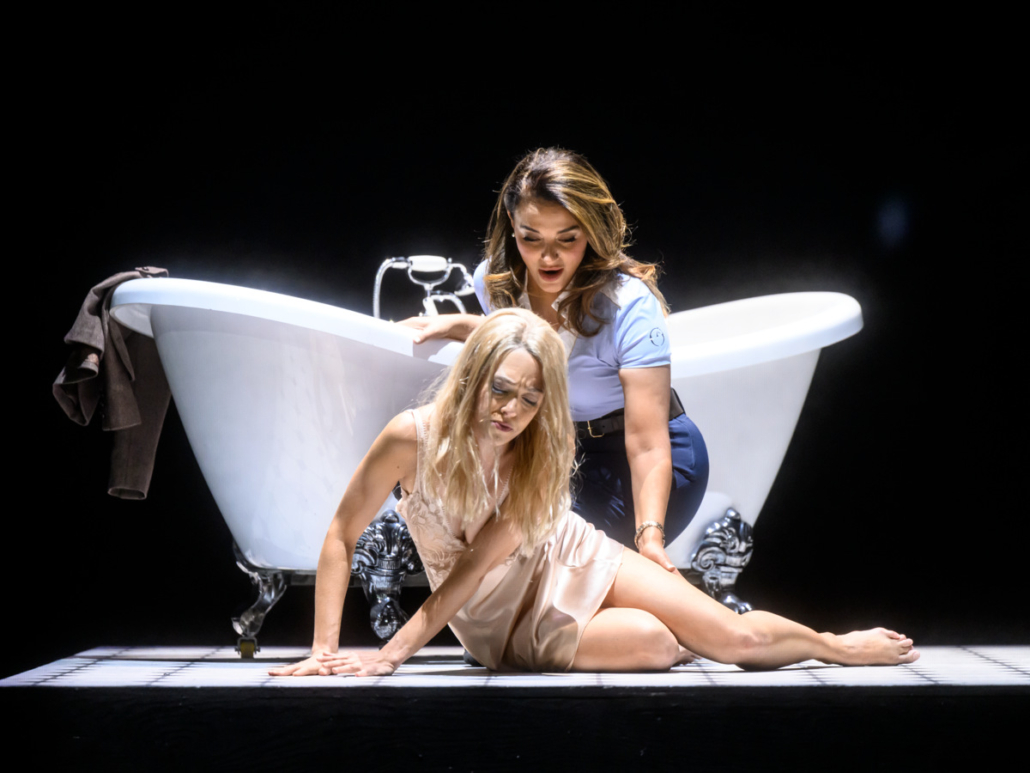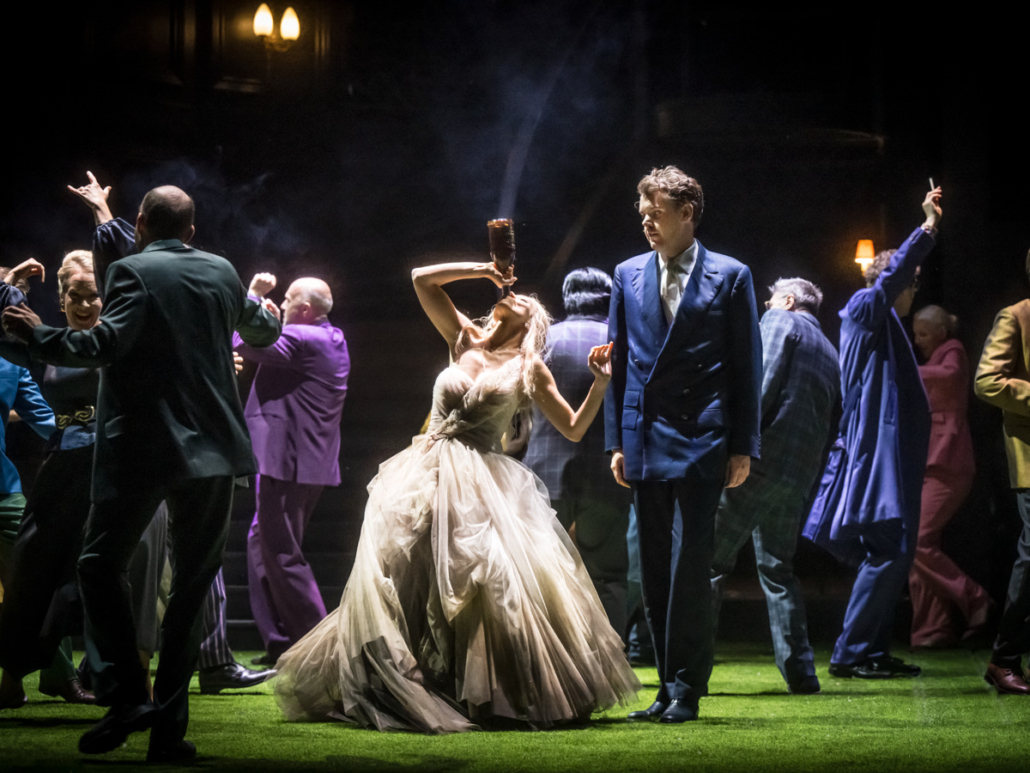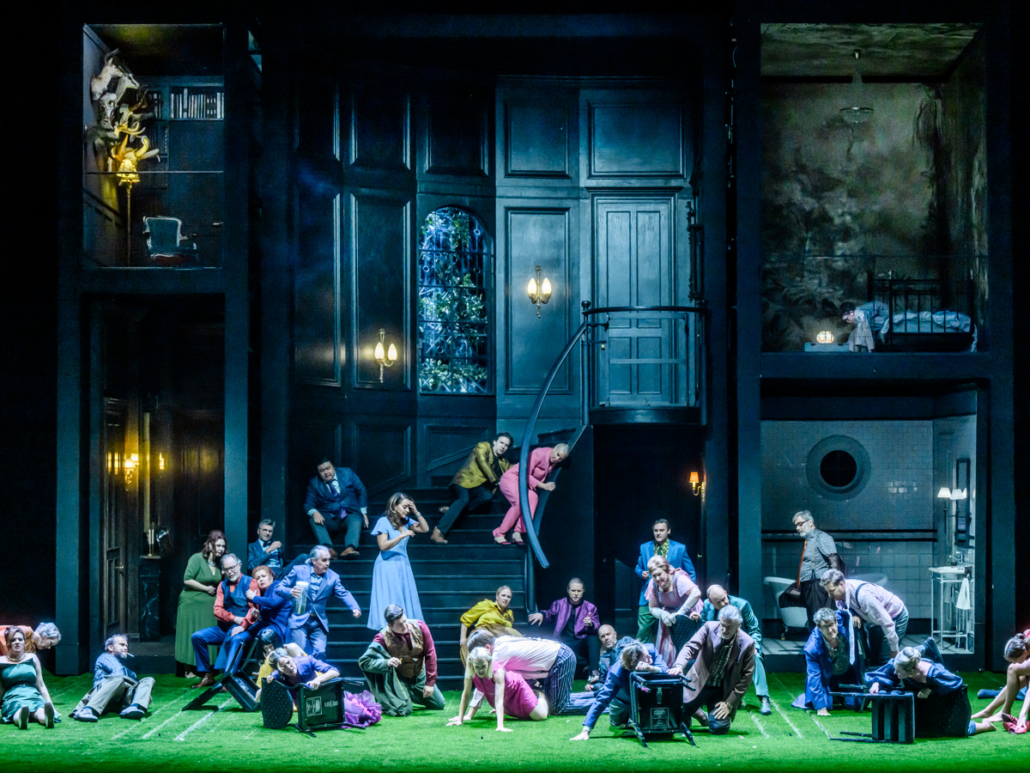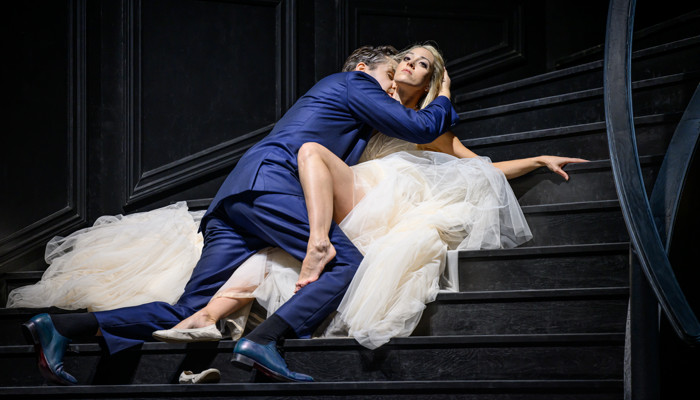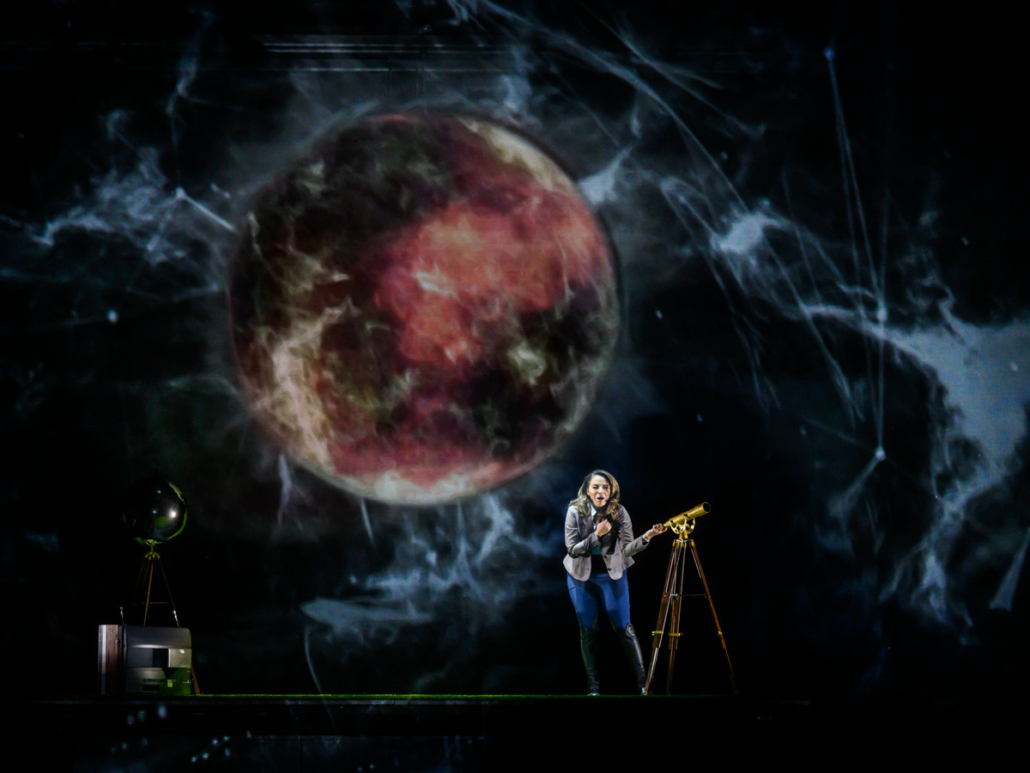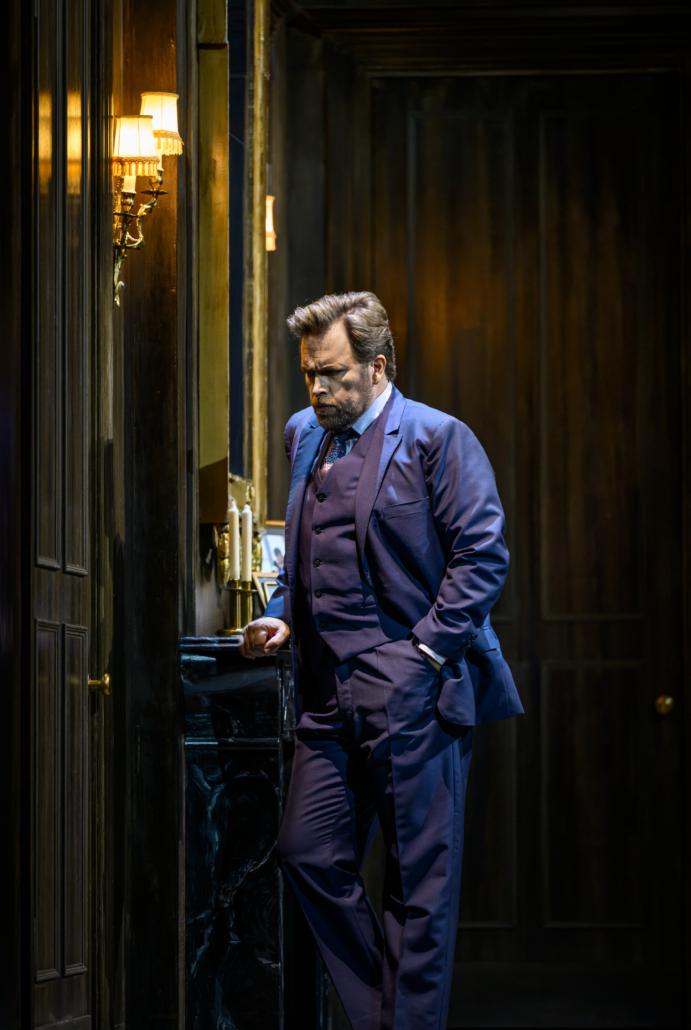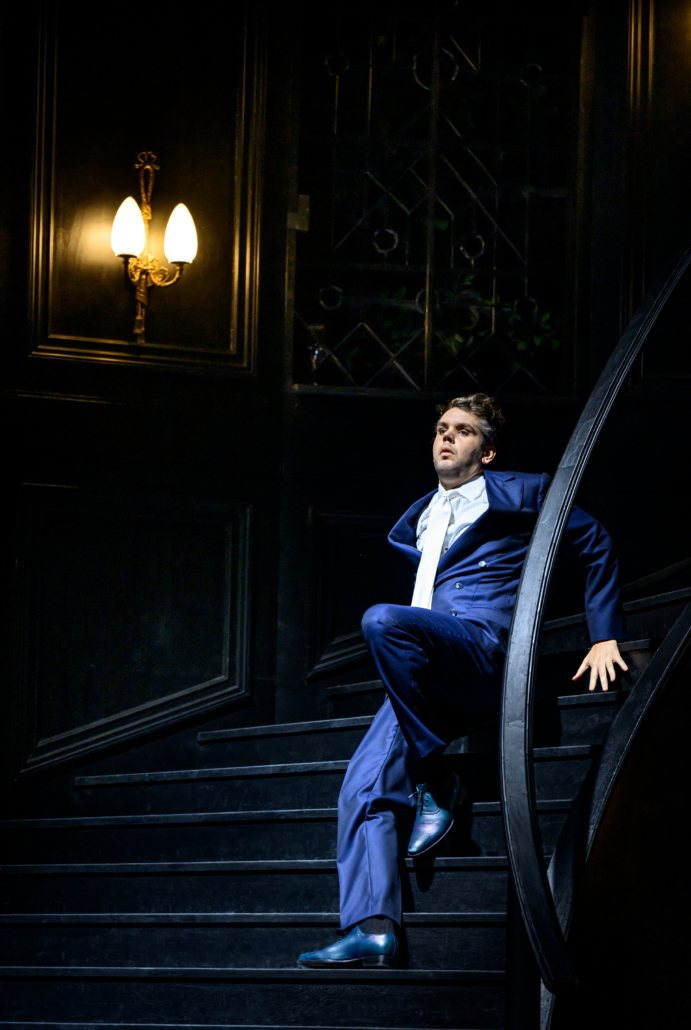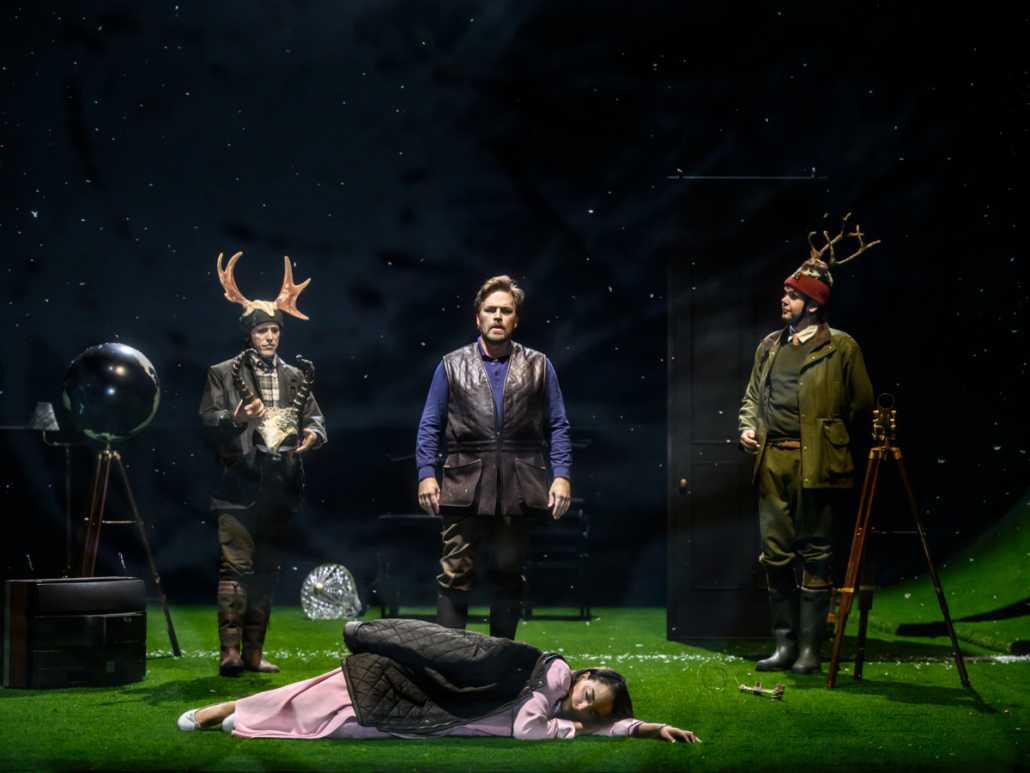Fanny and Alexander is a grand opera in two acts, adapted from the film by Ingmar Bergman by Mikael Karlsson and Royce Vavrek, with support from the Bergman Estate and artistic consultation from Cinematograph AB (Ingmar Bergman Jr. and Claes du Rietz).
The opera was commissioned by Peter de Caluwe and the La Monnaie Royal Opera in Brussels, Belgium, and will have its world premiere on December 1 2024.
MUSIC Mikael Karlsson
LIBRETTO Royce Vavrek
Based on the film by Ingmar Bergman
ORCHESTRATION Michael P. Atkinson & Mikael Karlsson
CONDUCTOR Ariane Matiakh
DIRECTOR Ivo van Hove
COMMISSIONED AND PRODUCED BY La Monnaie Royal Opera and Peter de Caluwe
WORLD PREMIERE December 1 2024
WITH KIND PERMISSION the Ingmar Bergman estate, Josef Weinberger Ltd.
RUNNING TIME Approx. 2 hours 20 minutes
WORLD PREMIERE CAST
- SUSAN BULLOCK Mrs Helena Ekdahl
- SASHA COOKE Emilie Ekdahl
- THOMAS HAMPSON bishop Edgar Vergerus
- ANNE SOFIE VON OTTER Justina
- LOA FALKMANN Isaac Jacobi
- ARYEH NUSSBAUM COHEN Ismaël
- PETER TANTSITS Oscar Ekdahl
- JUSTIN HOPKINS Carl Ekdahl
- POLLY LEECH Lydia Ekdahl
- GAVAN RING Gustav Adolf Ekdahl
- MARGAUX DE VALENSART Alma Ekdahl
Fanny and Alexander premieres on Dec 1 2024.
Mrs. Helena Ekdahl (70s)
Mezzo-soprano
The widowed matriarch, a former actress
Oscar Ekdahl (40s)
Tenor
Her son, manager of the family’s theater, father to Fanny and Alexander
Emilie Ekdahl (late 30s)
Mezzo-soprano
Mother of Fanny and Alexander, wife to Oscar, later to the Bishop
Fanny Ekdahl (8 years old)
Girl soprano
Daughter of Emilie and Oscar
Alexander Ekdahl (10 years old)
Boy soprano
Son of Emilie
Bishop Edvard Vergerus (40s)
Baritone
Marries the widowed Emilie, becoming stepfather to Fanny and Alexander
Justina (40s)
Mezzo-soprano
The Bishop’s housemaid
Carl Ekdahl (40s)
Bass-baritone
Helena’s second-born son
Lydia Ekdahl (40s)
Mezzo-soprano
Carl’s wife
Gustav Adolph Ekdahl (40s)
Tenor
The youngest of Helena’s sons
Alma Ekdahl (late 30s)
Soprano
Gustav Adolph’s wife
Isaac Jacobi
Baritone
Family friend, Jewish businessman
Aron (20) and Ismael (16)
Tenor and countertenor
Isaac’s nephews
Pauline and Esmeralda
Soprani
Young ghosts, drowned in their youth
Instrumentation
2 Flutes (I = Bass Flute, II = Alto Flute, Piccolo)
2 Oboes (II = English Horn)
2 Clarinets in Bb (II = Bass Clarinet in Bb)
2 Bassoons (II = Contrabassoon)
4 Horns in F
2 Trumpets in C (I, II = Flugelhorn in Bb)
2 Tenor trombones
Bass Trombone
Tuba
Timpani
Percussion (2 players)
Sampling Keyboard
Grand Piano
Harp
No Chorus
Soloists
Strings (C extensions for Contrabasses)
The score utilizes a pre-recorded backing track synchronized to a click track, which is triggered by the Sampling Keyboard player. An appropriate headset is required for the conductor to hear click track playback.
All singers and the orchestra are amplified.
The purpose of the amplification is to allow for less belting in singing, and to be able to mix electronics in a good way with the acoustic instruments. The amplified sound is mixed with backing tracks (some scenes only), live synths and samples. The conductor and the percussionists have headphones for click and playback. No one else does. The mix into the auditorium is multichannel. For the premiere production we used
1-2 Proscenium speakers
3-4 Side speakers
5-6 Rear speakers
7-8 High, surround speakers (directed at balconies)
9 Sub bass
10 Floor speakers / shakers
11 Chandelier speaker.
It’s mostly the backing tracks (for some scenes) and the sample synth that use the surround field speakers. There is a center speaker system on the edge of the stage that is only for the singers’ amplification.
The synth player uses an 88 key electric piano with weighted keys that triggers synths through Ableton Live.
The Ableton project requires an Ableton Live license, and the following software synths:
U-He Diva, U-He Zebra 2, Arturia Pigments, Korg Opsix Native
We use Relab Development LX480 Dual Engine Reverb for its Lexicon reverb emulations.
The synth player steps through 24 “Ableton scenes” to have the synth automatically change the synths and sample synths through the score. One octave is always saved for composed multi-channel samples, composed by Mika. All software is usually 50% off during Black Friday sales each year. That’s a good time for the house to acquire the needed software and licenses.
The synth player also triggers backing tracks for the scenes that use them. This is done on a separate system that runs Qlab. The Qlab project plays the pre-mixed backing tracks and a click track for the conductor and percussionists to guide the orchestra to synchronize with the prerecorded audio. Qlab requires a license.
All this amounts to a surround sound experience with live and prerecorded audio running with the acoustic performance, in perfect sync, and performed on a synth as a regular instrument. A vast sound world is thereby achieved, along with a more powerful listening field (especially for the orchestra seats).
Mika needs ample, dedicated mixing time in the auditorium to create a custom mix of the music. Almost no house has a predictable audio system, so a dedicated mix for the house is necessary.

